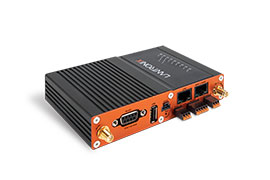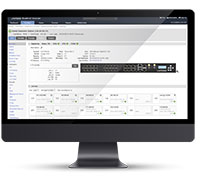
Transition Networks – Because They Are!
This quote from our South Central Regional Sales Manager Alphie Kilgus is one of my favorite quotes. We say it a lot here at Transition Networks—because networks are always “in transition”. We’ve already witnessed the progression of Ethernet networks from 10 Mbps to 100 Mbps to 1000 Mbps. And now the adoption time for higher speed networks is accelerating rapidly to 10G, 25G, 40G and 100G Ethernet with the need for faster networks being driven by HD video, social media, virtual reality, and Internet of Things (IoT). So how do you plan for those transitions while still meeting today’s network needs? And how can you do it with today’s budget?
- Utilize equipment with open Small Form-factor Pluggable Transceivers (SFP) slots rather than fixed optic connections
- Enhance your network with SFP special features – DMI, OTDR, Ethernet Extenders, and implement fiber conservation technologies
- “Pay as your grow” strategy – pay for and populate only the ports you need today and simply add SFP transceivers as needed to accommodate your network growth
The first simple way is through the use of equipment with open SFP slots rather than fixed optic connections. SFPs allow for a single piece of network equipment to be connected to a multitude of interfaces, protocols, and transmission media via the SFP/SFP+ port. SFPs offer a cost-effective and flexible method to accommodate network modifications and growth while using existing network devices.
Let’s say you have a network that is currently operating at 100 Mbps Ethernet rate, but you know you will soon need to upgrade your network speed to 1000 Mbps. If your network device (for example, a switch, media converter, or Network Interface Card (NIC)) has open SFP slots that support dual speeds (100/1000 Mbps), you can plug a 100 Mbps SFP into your device today and simply replace the SFP with a faster 1000 Mbps SFP later when you are ready to speed up the network. Or, you can use a multi-rate SFP right away, and the speed will be auto-negotiated to 100 Mbps today and 1000 Mbps after the rest of your network has been upgraded to the higher speed. The flexibility of open SFP ports allows you to extend the life of your existing equipment.
Network equipment with open SFP slots can also provide flexibility regarding fiber type or how far you need to transmit data. Equipment with fixed optic connections can only accommodate a specific fiber type—either multimode fiber which is typically limited to shorter transmission distance of up to 550 m at Gigabit Ethernet speeds, or single mode fiber which is used primarily for long distance transmission up to 10 km or further. This can become a serious problem as more advanced applications will require greater bandwidth and therefore the transmission distance over multimode fiber will become more limited. If you want to increase the bandwidth or distance of those transmissions, you would have to actually replace the entire fixed optic device, as well as the fiber. However, devices with open SFP slots are more versatile since they can be repurposed based on the insertion of either a multimode or single mode SFP module (and the associated fiber jumpers).
The second benefit of equipment offering open SFP slots is that you can take advantage of special features of SFPs to enhance your network. For instance, you might choose SFPs that support digital diagnostics monitoring (DMI), allowing you to monitor the performance of the SFP in terms of input power, output power, and temperature. Another smart technology feature found in some SFPs is embedded optical time domain reflectometry (OTDR), which can isolate physical fiber faults within 10 m so technicians can quickly detect and repair problems with their fiber infrastructure. To get even more leverage from your existing network devices and cable infrastructure, Ethernet Extenders are also available in a SFP transceiver, allowing you to extend Ethernet service beyond the traditional 100 m Ethernet cable limitation by simply plugging into an open SFP port on an existing device. Open SFP slots on network equipment can also be used to implement fiber conservation technologies such as coarse wavelength division multiplexing (CWDM) or dense wavelength division multiplexing (DWDM) in a SFP transceiver. These technologies allow users to combine multiple signals at various wavelengths for simultaneous transmission over fiber cables, in effect increasing bandwidth on the existing fiber infrastructure and alleviating fiber exhaustion. As feature sets continue to grow, SFPs can provide added benefits to your existing network infrastructure.
Finally, the use of equipment with open SFP slots allows a “pay as you grow” strategy. This means you can pay for and populate only the ports you need today and simply add SFP transceivers as needed to accommodate your network growth. There are also logistical benefits to using equipment with open SFP slots. Ordering and stocking is simplified since one switch, media converter or NIC can be ordered, stocked, and readily deployed for most applications. A variety of SFPs can then be stocked or ordered as needed based on project timing and specific applications.
Transition Networks is continuously expanding its portfolio to include more product options with open SFP slots, giving customers more choice and flexibility to suit their needs. One recent addition is our new PCIe dual speed 100/1000 Mbps Ethernet Fiber NIC with an open SFP slot. This NIC offers secure networking for government and enterprise fiber-to-the-desktop (FTTD) applications, while providing more fiber connectivity choices from a single product, which also simplifies ordering and logistics for customers.
One thing in life that is certain is change. So make sure your network can support future changes easily and cost-effectively by deploying devices with open SFP slots to accommodate whatever speed, fiber type and other features you may need.












